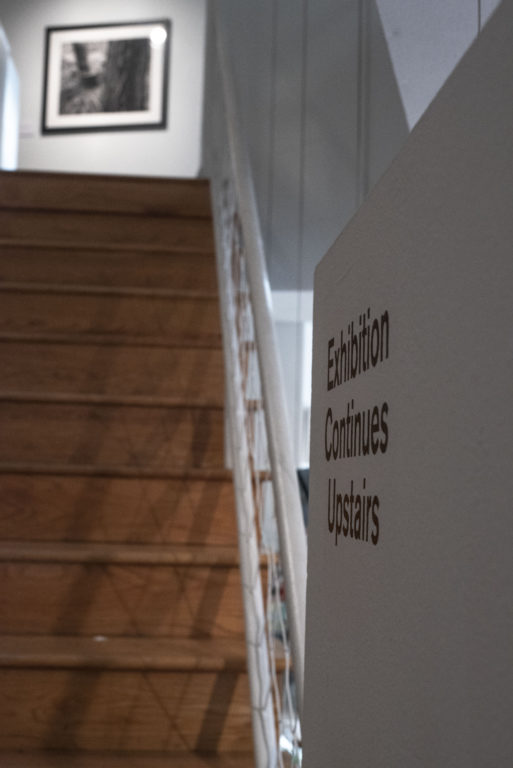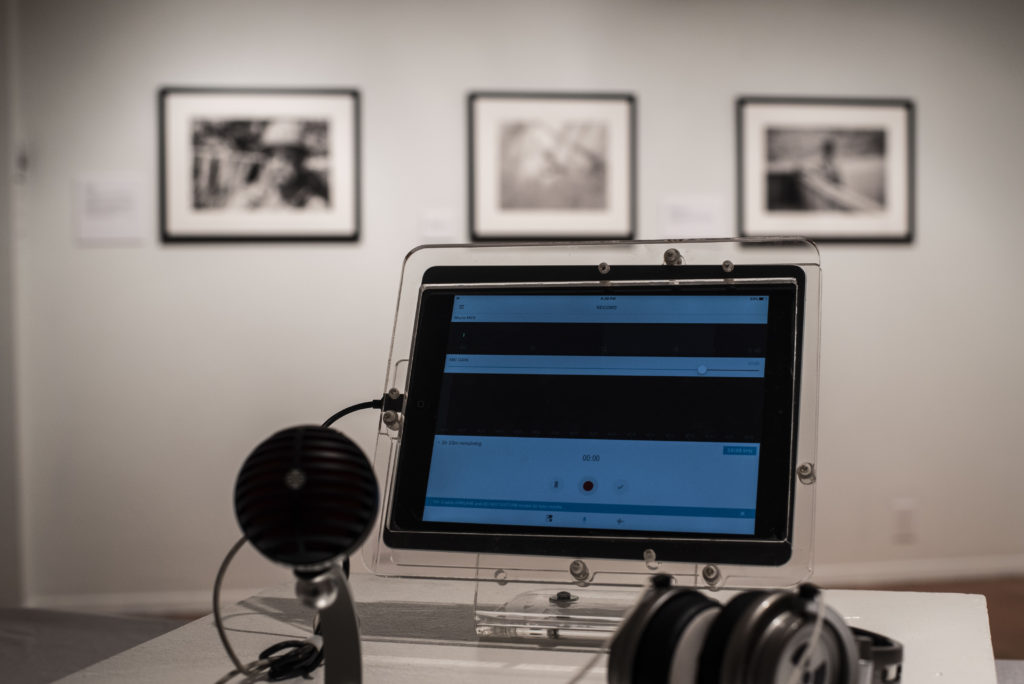A single summer as a logger turned into four years working in the Sierra Nevada Mountains for David Paul Bayles.
Bayles, a photographer, was inspired by the loggers who worked there, which is where he got the idea for the traveling exhibit “Sap in their Veins,” the Prichard Art Gallery’s newest exhibit, on display until Dec. 9.
“It was a physical experience, nothing I had ever done before growing up in the suburbs of L.A.,” Bayles said.
Bayles has always felt art was a way of expressing awareness to alternative issues. Compared to other pieces, “Sap in their Veins” was not as much a documentary, but a way of exploring with “conceptual image making and an emotional point of view” as an attempt to express like-minded ideals.
ICYMI: Sculptures of sound reside in the Prichard
“Sap in their Veins” shows a more human side to those at the root of the issue, a way to try to bridge divides and help those at opposite sides — like environmentalists and loggers — in a different way, Bayles said.
“I thought, you know if I can make a series to show the more human sides to loggers, who are not evil and present them as everyday humans who are feeding their families and living lifestyle they wanted to live,” Bayles said.
Before “Sap in their Veins” was created, but after Bayles worked in the Sierra’s in the ‘80s, Bayles attended photography school.
As articles on climate change grew prominent, Bayles said conversation between environmentalists and loggers progressed, depicting loggers in a violent light.
“The older I get and the angrier I get, I feel more like we are running out of time and I need to use more tools in my toolbox,” Bayles said.
For this collection, Bayles said he used emotion because it was appropriate for this particular project, telling the stories of oppressed loggers.

Entrance to the Sap in their Veins exhibit
Alex Brizee | Argonaut![]()
A view of the “Sap in their Veins” exhibit as it continues upstairs
Alex Brizee | Argonaut![]()
An interactive piece in the “Sap in their Veins” exhibit which allows users to tell their own tree or forest story
Alex Brizee | Argonaut
“Making portraits of the men that were not distant and aloof,” Bayles said. “They were intimate portraits in terms of being trusted by them, feeling comfortable looking right into the camera and letting the viewer see them as trusting with their stories and sharing their stories.”
The exhibit has traveled to four museums, three in California and one in Portland, Bayles said.
It is on display because of the work done by the Society for Photographic Educators. Bayles spoke at a conference Roger Rowley, director of the Prichard, attended. During the conference Rowley and other universities approached him to show his work at their galleries.
This reaction prompted Bayles to make “Sap in their Veins” a traveling exhibit.
“There’s a quote, ‘If a tree falls in the woods and if there’s no one to hear it, did it really happen?” Rowley said.
Although it is understood that falling trees make a lot of noise, this concept plays a role in the understanding of the art itself.
ICYMI: Rochester to Moscow
“We are going from this thing that did make a lot of noise, to materials you don’t necessarily think of in relation to sound objects, to something you visually see an image of sound,” Rowley said.
Although the ‘Sap in their Veins’ exhibit may seem like polar oposite to the Zimoun exhibit, the sensory-focused exhibit that occupied the Prichard prior, the two may not be as different as they seem.
The photo gallery has photographs of loggers which include texts from interviews with the loggers, giving the sense the photos are talking, creating the idea of sound like the Zimoun exhibit.
Bayles said he has made a life of doing what he loves — creating and expressing his and other’s stories through photography.
“I guess there’s something I like to tell young photographers which is to look with their eyes but see from the heart,” Bayles said.
Emily Pearce can be reached at arg-life@uidaho.edu


